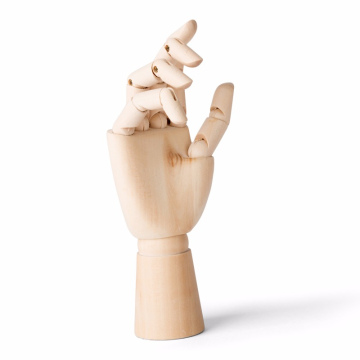The Origins of Ramen
Discover the rich history of ramen, tracing its origins from Chinese noodle dishes to the beloved Japanese staple it is today. Explore the regional varieties of ramen across Japan, including tonkotsu, shoyu, and miso ramen, each with its unique flavors and traditions. Learn about the cultural significance of ramen in Japanese dining, and gain tips for enjoying authentic ramen experiences, whether in Japan or at home. Dive into the world of ramen and savor the diverse interpretations of this iconic dish.
Japan’s Udon: A Journey Through Japan’s Beloved Noodle
The Origins of Udon: A Historical Perspective
The history of udon noodles is deeply intertwined with the cultural and culinary evolution of Japan. While the precise origins of udon remain a topic of debate, many historians agree that these noodles likely have roots extending back to ancient China. It is posited that udon was introduced to Japan during the Nara period (710-794) by cultural exchanges with Chinese emissaries and traders who brought various forms of noodles to the archipelago. The initial embrace of these noodle types laid the groundwork for the development of udon as a uniquely Japanese dish.
The Heian period (794-1185) marks a significant point in the history of udon. This era is characterized by an increasing appreciation for food aesthetics and innovation. During this time, udon began to establish itself distinctly within Japanese cuisine, often being utilized in ceremonial meals and elite dining. Notably, the preparation methods evolved, and regional varieties began to emerge, tailored to local tastes and ingredients.
Today, the evolution of udon continues, reflecting the dynamic nature of Japanese cuisine. Much like its historical journey, the noodles challenge chefs and culinary enthusiasts to explore the blend of tradition and innovation that defines this beloved staple of Japanese cooking. Understanding the origins of udon provides insight into its significance and enduring popularity within the vast landscape of Japanese gastronomy.
Types of Udon: A Culinary Diversity
Udon, with its thick, chewy texture, comes in various types that reflect the rich culinary diversity found across Japan. Each region celebrates its unique take on this beloved noodle, showcasing distinct ingredients, flavors, and cooking methods. This diversity enhances the overall culinary experience of savoring udon, making it a dish deeply rooted in both tradition and regional pride.
One of the most celebrated styles is Sanuki udon, hailing from Kagawa Prefecture. Known for its width and firmness, Sanuki udon is typically served in a hot broth made from a delicate blend of soy sauce, mirin, and dashi, contributing to its savory umami flavor. The texture is a result of a traditional kneading and cutting process that ensures an exceptional bite. Often, this style is garnished with green onions, tempura, or a raw egg, enhancing the layered flavors that characterize this dish.
Another notable variation is Nishin udon, associated with regions like Kyoto. This style features herring, which is often simmered in a sweet sauce and served atop udon noodles. The fish contributes a unique salty-sweet element, beautifully complementing the dish's soft texture. Culinary Traditionally, Nishin udon is enjoyed during the colder months and reflects the seasonal ingredients available in its region.
Finally, Kitsune udon is distinguished by its topping of aburaage, or fried tofu pockets. The sweetened, fried tofu adds a delightful crunch and is often served in a light broth. This variation is especially popular in the Kansai region and is a testament to how simple ingredients can create a comforting, fulfilling meal. Each type of udon reveals the cultural heritage from which it originates and highlights the flexibility inherent in Japanese cooking.
The Art of Making Udon: A Culinary Craft
The process of crafting udon, a staple of Japanese cuisine, is an intricate art that merges tradition with culinary skill. At its core, udon is made from just two essential ingredients: high-quality wheat flour and water. The choice of flour is paramount; it should be of a soft and chewy variety, often referred to as “udon flour.” This specific type contributes to the distinct texture that udon is known for, a characteristic that elevates the dish in both taste and presentation.
Once the ingredients are gathered, the first step involves mixing the flour with water. The kneading process that follows is crucial; achieving the right consistency requires physical labor and patience. Culinary Traditionally, this kneading is done by foot in large batches, which ensures that the dough is evenly mixed and provides the desired elasticity. The dough is then allowed to rest, letting the gluten relax, which is essential for developing the ultimate chewy texture of the udon noodles.
After resting, the dough is rolled out and cut into thick strips. This cutting technique has evolved over time, with chefs employing both traditional knives and modern machinery to create perfect udon shapes that are uniform yet retain variations in thickness that add charm to the dish. The nuances of cutting impact not only the visual appeal but also the texture and mouthfeel experienced by those who enjoy the noodles.
The broth that accompanies udon is equally significant. A rich and flavorful broth often consists of dashi, soy sauce, and mirin, which are combined to produce a soup that enhances the noodles. Some variations include adding ingredients such as green onions, tempura, or mushrooms, showcasing both regional specialties and personal preferences. The balance of flavors and textures between the udon noodles and their broth forms the essence of this beloved Japanese dish, making the art of making udon a true culinary craft.
Udon Culture: From Street Food to Fine Dining
Udon, a thick wheat noodle originating in Japan, has woven itself into the fabric of Japanese culture, symbolizing both tradition and adaptability. Over centuries, udon has evolved from a simple street food staple to a dish embraced by fine dining establishments, illustrating the culinary versatility and cultural significance of this beloved noodle. While the basic recipe of udon remains unchanged, its presentation and accompaniment have varied widely across different settings and regions.
In casual eateries, udon is served in a myriad of styles, often featuring rich, flavorful broths that vary by region. For instance, Kagawa Prefecture is known for its distinctive Sanuki udon, celebrated for its chewy texture and often enjoyed with a light dipping sauce or broth garnished with scallions and tempura. Conversely, upscale restaurants elevate udon by using premium ingredients, such as organic wheat and artisanal broth, complementing the noodles with delicacies like truffles or seafood, showcasing the artistry involved in udon preparation.
Additionally, udon is steeped in community and familial connections, often appearing during social gatherings and celebrations. The noodle symbolizes comfort and togetherness, making it a staple at family home-cooked meals and festivals. Events such as the Udon Festival in Kagawa often feature regional competitions that draw attention to the craftsmanship and creativity involved in udon making. Here, artisans display their skills, turning the preparation of udon into a spectacle of cultural pride.
This extensive journey from humble street carts to gourmet plates exemplifies not only the popularity of udon but also its impact on social interactions within Japan. By sharing a bowl of udon, families and friends celebrate life’s moments, underscoring the vital role this noodle plays in fostering connections across generations. As udon continues to thrive in diverse culinary landscapes, it remains a unifying element of Japanese culture, bringing people together around the dinner table.






